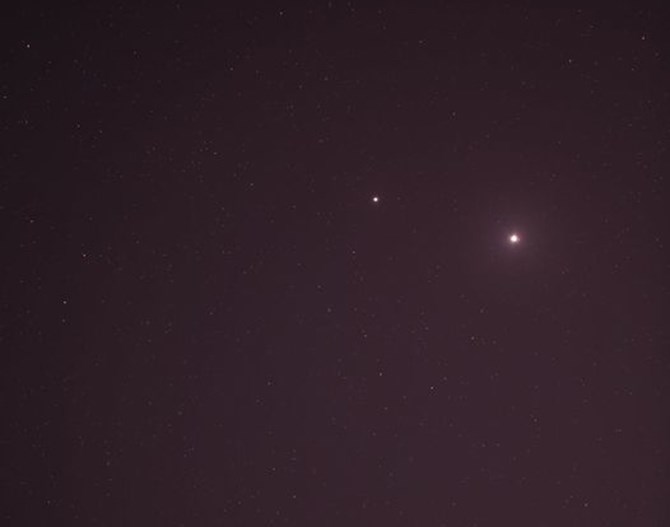
Jupiter and Saturn are moving towards a Dec. 21, 2020 conjunction in this photo taken by the Royal Astronomical Society.
Image Credit: Facebook/ Royal Astronomical Society
December 11, 2020 - 6:00 AM
This December, night sky-gazers are in for a treat as a celestial event that hasn’t been witnessed since Genghis Khan ruled Asia takes place later this month.
On Dec. 21, coincident with the winter solstice, Jupiter and Saturn will appear closer in the Earth’s night sky than they have since 1226 A.D.
The planets have been this close since then – in 1623 – but at the time of that conjunction, they were too close to the sun to be seen.
Although conjunctions are common in astronomy, this one is special because of the proximity at which the two gas giants pair up.
According to Astronomy.com, the two largest planets in our solar system will appear to almost merge in the night sky, slowly moving closer to each other each day between now and Dec. 21.
Astronomers are calling it the Great Conjunction of 2020. On Dec. 21, Saturn and Jupiter will sit .1 degree apart, or around one-fifth the width of the moon. They will be so close they will appear as a single planet
Both planets are visible in the southwestern sky just after sunset, about 20 degrees above the horizon.
As an added bonus, you won’t have to stay up half the night to witness the conjunction, which is best viewed shortly after sunset.
The next great conjunction is expected to take place in 2080.
The Royal Astronomical Society of Canada has made up a GIF image of the two planets as they approach each other through the month of December, viewable on the Royal Astronomical Society Facebook page.
There is no astrological meaning to this month's Great Conjunction, although it's believed a similar astronomical event that might have occurred at the time of the birth of Jesus may be an explanation for the "Christmas Star."
To contact a reporter for this story, email Steve Arstad or call 250-488-3065 or email the editor. You can also submit photos, videos or news tips to tips@infonews.ca and be entered to win a monthly prize draw.
We welcome your comments and opinions on our stories but play nice. We won't censor or delete comments unless they contain off-topic statements or links, unnecessary vulgarity, false facts, spam or obviously fake profiles. If you have any concerns about what you see in comments, email the editor in the link above.
News from © iNFOnews, 2020